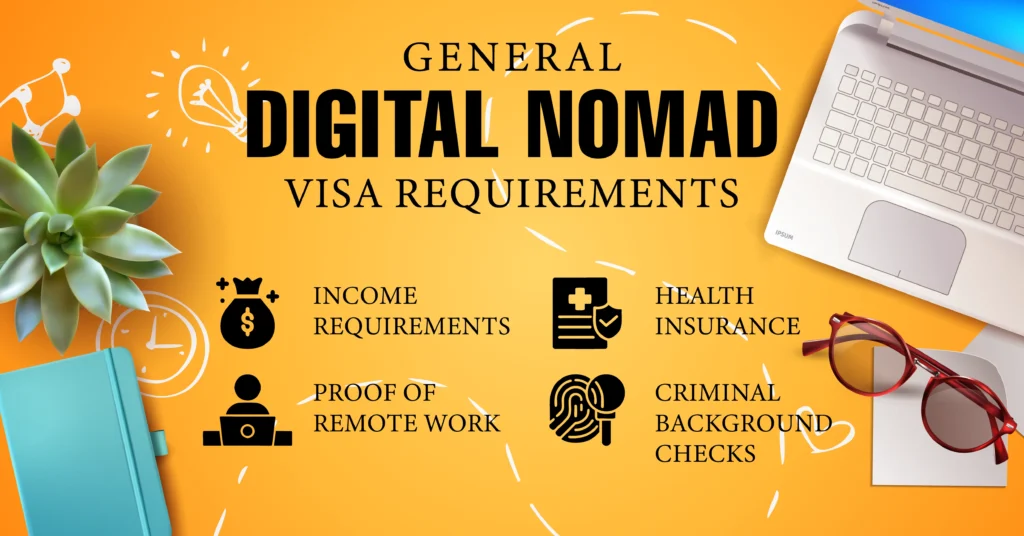In 2025, the idea of working abroad is no longer just a dream; it is rather the choice of thousands...
How to Apply for a Digital Nomad Visa
If you work remotely and wish to settle in Europe, will rich culture, affordable living, and fantastic scenery attract you? Obtaining the Romania Digital Nomad visa could be the way for you to discover something new.
How to Apply for a Digital Nomad Visa

In 2025, the idea of working abroad is no longer just a dream; it is rather the choice of thousands of professionals and retired people who want to have more freedom, discover new cultures, and increase their financial possibilities. Since more countries have become open to remote workers, the question of how to apply for a digital nomad visa is becoming one of the most frequently asked ones among those who want to utilize this worldwide trend.
What is a Digital Nomad Visa?
The digital nomad visa is a type of digital nomad residency permit that grants foreign remote workers, freelancers, and retirees with online sources of income. In contrast to a tourist visa, a digital nomad visa is a completely different instrument with a feature of longer stays, and it also offers a foreigner legal residency without the need for a local job contract.
Practically, in 2025, numerous governments will have implemented such types of programs as part of their efforts to attract the best-qualified international candidates, trigger different ways to spark their local economies, and promote cultural exchanges with other countries.
General Digital Nomad Visa Requirements

Despite the fact that each country has its own specific way to handle the process, most programs have some common grounds in terms of eligibility criteria. Such as;
Income Requirements
Proof of a regular monthly income or adequate savings is a must for the applicants. Some nations set the limit at roughly €2,000 per month, while others ask for more than €3,500.
Proof of Remote Work
The evidence will be a work or a freelance contract with a client who is located in a foreign country. The owners of businesses may also present a company registration certificate.
Health Insurance
The authorities require a health insurance policy that is comprehensive and covers an applicant in his/her country of destination.
Criminal Background Checks
Normally, a recent police clearance or a background check is required to confirm that the applicant has a clean record.
Step-by-Step Digital Nomad Visa Application Process
If you break down the process into clear, manageable steps, it becomes quite feasible.
Step 1: Research the Best Countries for Digital Nomad Visas 2025
The best countries for digital nomad visas 2025 vary from EU countries like Portugal, Spain, and Greece, which not only provide Mediterranean living but also access to the EU, to the non-EU nations like Mexico, Costa Rica, and the UAE, which are famous for their low cost, flexibility, and richness in culture.
Step 2: Check Eligibility and Income Requirements
Every country has its specific income requirements that applicants need to meet, for instance;
- Portugal requires the monthly income of an applicant to be approximately €3,000.
- Mexico is setting lower thresholds.
- Estonia is neither ambitious nor too modest with its requirements.
Step 3: Prepare Your Documents
The next step in building your digital nomad visa checklist is to include the standard documents.
- The first thing for sure is a valid passport (with at least 6–12 months’ validity)
- Proof of employment or freelance contracts
- Recent bank statements or income proof
- Comprehensive health insurance
- Criminal background check or police clearance
Step 4: Submit the Application
There is a wide range of processing times between countries; some of them may approve requests in a few weeks, while others can take a few months.
Step 5: Wait for Approval & Obtain Your Residency Permit
Once approved, a visa stamp in your passport or a digital nomad residency permit at the time of your arrival is what you get.
Step 6: Move & Register Locally
The situation might be that a certain country, where you have just arrived, demands that you come to the local office within a certain time period to prove your registration.
- Registering your residence with the local authorities
- Opening a bank account
- Applying for a tax number or clarifying your tax residency status
Digital Nomad Visa Checklist
The 2025 edition of the Digital Nomad Visa checklist is as follows:
- A passport that should be valid for at least 6 to 12 months.
- A statement of your working remotely, a freelance contract, or business ownership.
- Your bank accounts’ statements to indicate that your income is regular.
- If the minimum income is required to be met, then it is necessary to present the evidence of income (the exact threshold differs in each country).
- The health insurance that covers the insured for the entire duration of the stay in the host country.
- A certificate for no criminal records or a police clearance certificate.
- A completed application form along with a copy of the receipt for the government fee payment.
- Passport-sized photos (as per the requirements of the country).
- The documents about the place of residence cover the rental agreement, the hotel booking, or the invitation letter.
Common Mistakes to Avoid
Below are the most common mistakes which you should avoid:
- Not Meeting Income Requirements.
- Submitting Incomplete Applications.
- Choosing the Wrong Country for Your Lifestyle.
Best Countries for Digital Nomad Visas in 2025

The best countries for digital nomad visas in 2025 are as follows, primarily due to lifestyle perks, affordability, and flexible residency options.
Spain has become the number one choice for remote workers, providing a one-year digital nomad residency permit with the option of renewal up to five years. Its lovely weather, fascinating culture, and open door to EU countries are the reasons why people choose to stay here.
Portugal has the moderate-income requirements and the cheerful community of remote workers. The holders can have accessible permits, and then they can even qualify for permanent residency and citizenship.
Once a new face in the digital visa world, Estonia is still bearing the torch in 2025. The goal of its program is to attract freelancers and startups; it also makes use of the advanced e-services and efficient bureaucracy.
The digital nomad residency permit in Malta is well accepted in the market because countries like the UK and the USA make it easy to communicate in English, and it is also a central location in the Mediterranean Sea.
Budget-conscious nomads who are willing to go to Mexico, where one of the most affordable and flexible visas will be at their disposal. With relatively low-income requirements and an ever-growing expatriate community, it is still one of the best non-EU places
Remote work turned out to be so popular in 2025 that living globally is not an issue anymore. However, in order to succeed, it is imperative to know the digital nomad visa application process. Everything from researching destinations and fulfilling income requirements to document preparation and getting your digital nomad residency permit is a step in a big change. You should discover how to apply for a digital nomad visa beforehand so that you can avoid the typical errors, simplify your relocation, and comfortably intermingle with the locals of your new country.
More Blogs:
Retire Abroad in 2025 By 2025, there is an unprecedented number of retirees seeking residence outside their native countries in...
Cheapest Countries Offering Residency Programs in 2025 Affordable residency is still a glaring concern as we look ahead to 2025....
Top Countries Offering Digital Nomad Visas The employment opportunities have expanded beyond office walls in 2025. As remote companies flourish...

